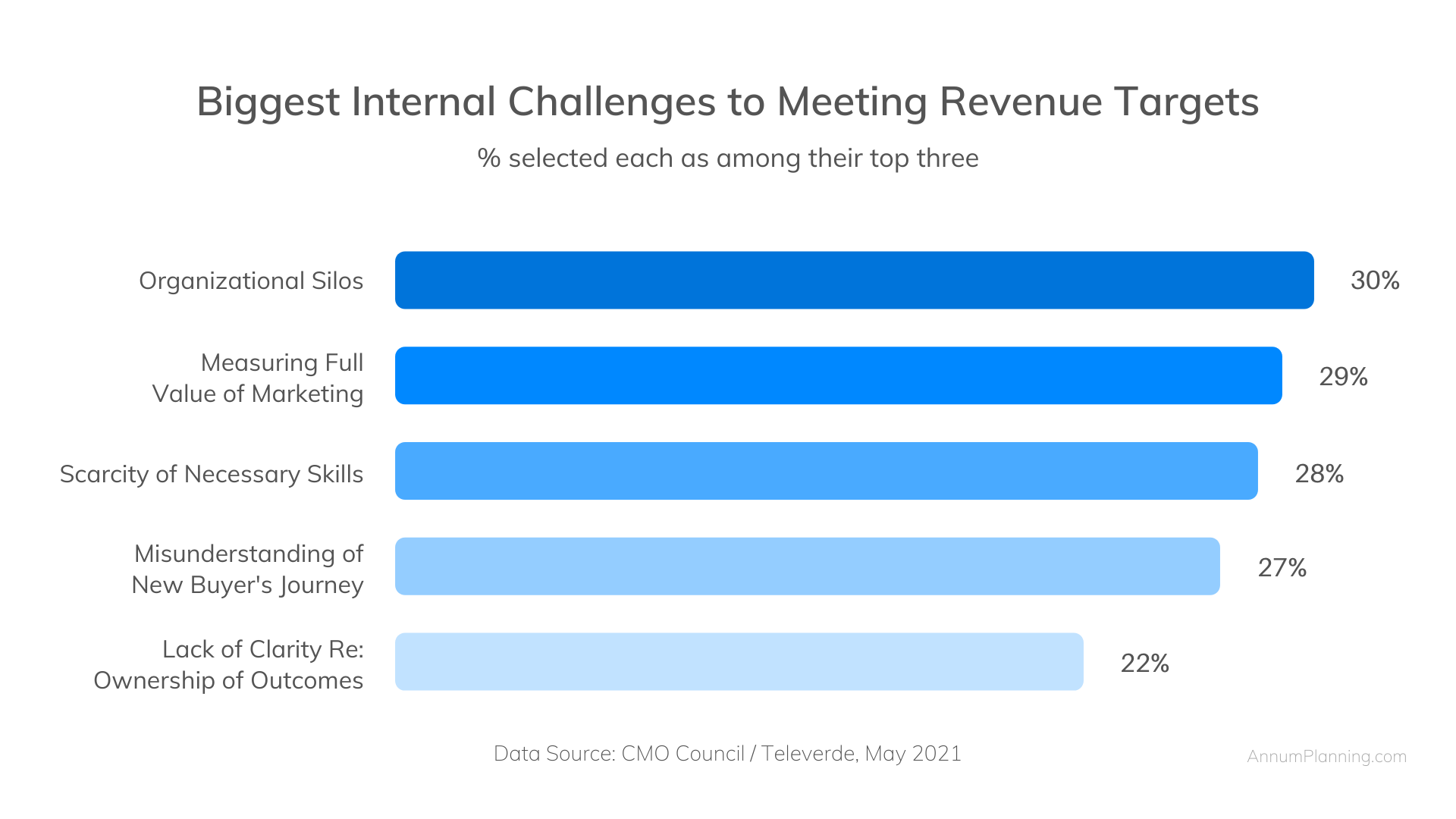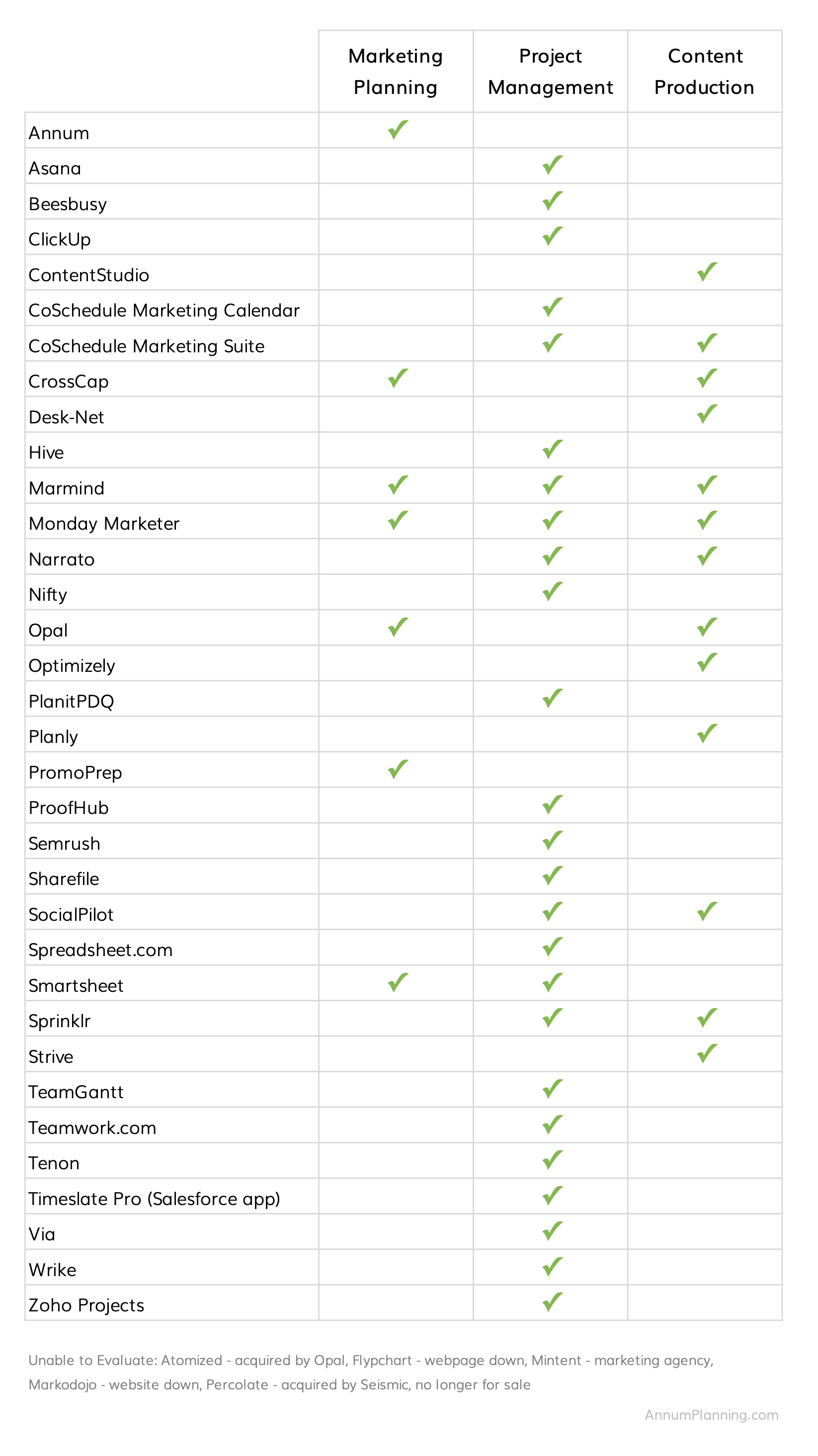CHOOSING THE RIGHT MARKETING PLANNING SOLUTION
Common Marketing Planning Tools Compared Against the“Best Marketing Calendar Software” on G2
Our aim is to guide you through the various types of marketing planning tools available and assist you in evaluating solutions.
Your marketing planning software is your guiding compass—it’s where you chart your course and ensure all efforts align harmoniously to create a cohesive and compelling customer experience that delivers on the business objectives.
As marketers, we understand how critical your planning calendar is. We’ve wrestled with spreadsheets and tried tool after tool, but none gave us the universal visibility we needed. That’s why we developed Annum, a strategic integrated omnichannel planning solution that gets everything and everyone on the same page. To explain what makes it different from other marketing calendar tools, we’ll start by breaking down the categories of tools commonly used for marketing planning. Then we’ll do a comparison of the solutions listed in G2’s best marketing calendar category alongside Annum.
Common Tools Used for Marketing Planning
Slide Decks and Spreadsheets
High-level strategy, initiatives, and campaigns are most often represented by timelines manually designed in stand-alone slide decks. To manage their technical complexity, tactics are planned in channel specific spreadsheets painstakingly formatted and updated by hand.
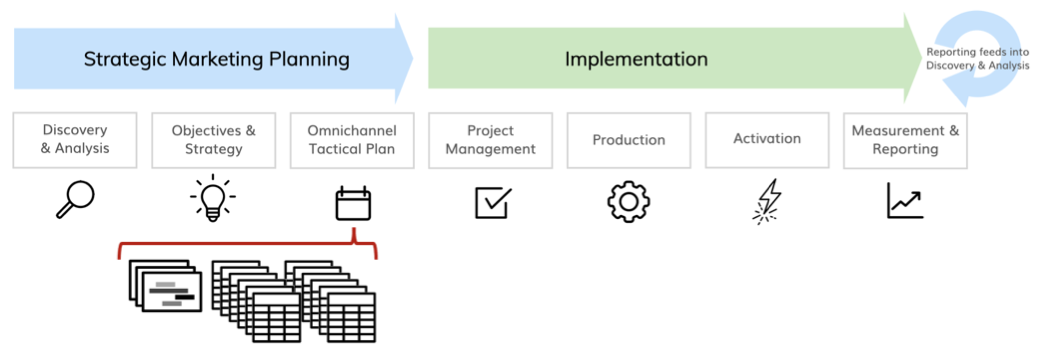
As digital communication channels have multiplied, this practice has become unruly. With tactics siloed by channel there’s no unified view of the customer experience, or in other words what’s in market when.
- Collaboration between teams, departments, and agency partners is challenging and inefficient.
- Meetings and email are relied on to keep people updated
- With no way to connect tactics to strategy, planning becomes very channel centric
Project Management and Production Applications
When campaigns become more sophisticated and teams grow, markers adopt project management and production tools to better manage workload, workflow, and content development. Work management tools are built for “sausage making” and designed to show to-do lists, tasks, and project assets.
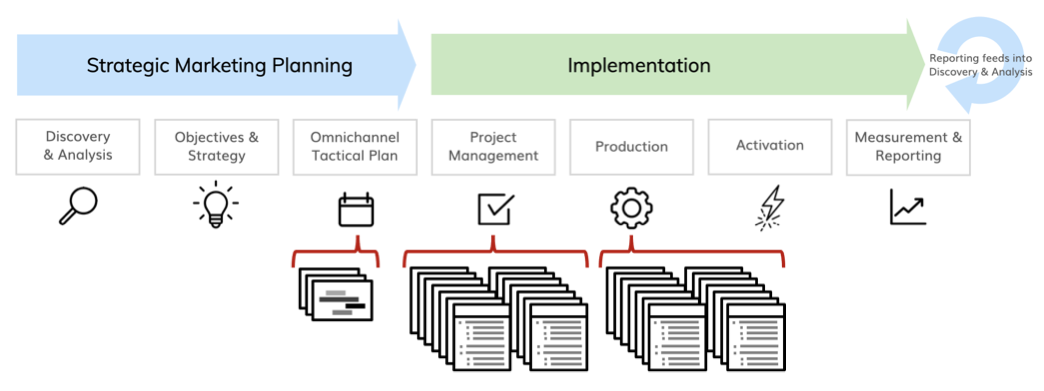
When used for tactical marketing planning there’s no way to see the big picture or connect tactics to strategy.
-
- There’s no way to optimize or assess cross-channel coverage of a campaign or target segment
- There’s no historical plan of record to reference for performance analysis and campaign optimization
- Teams are task and deadline driven
Siloed Plans Hold Marketers Back From Driving More Revenue
When marketing tactics are disconnected from strategy and siloed by channel or project, teams lose control of the customer experience.
Marketing silos have long been a curse of the industry. In fact, in a report from the CMO Council and Televerde, organizational silos are listed as the biggest internal challenge to meeting revenue targets.

Strategic Marketers Need an Integrated Planning Solution
In order to create stronger integrated plans and meet revenue goals, marketers need a planning system that keeps strategy front and center and the focus on the omnichannel customer experience, while getting everyone and everything on the same page. Once you can see all channels and tactics side by side you can optimize campaigns and content for cross channel coverage, timing and messaging. Once you can connect tactics to strategy you can truly guide the customer journey.
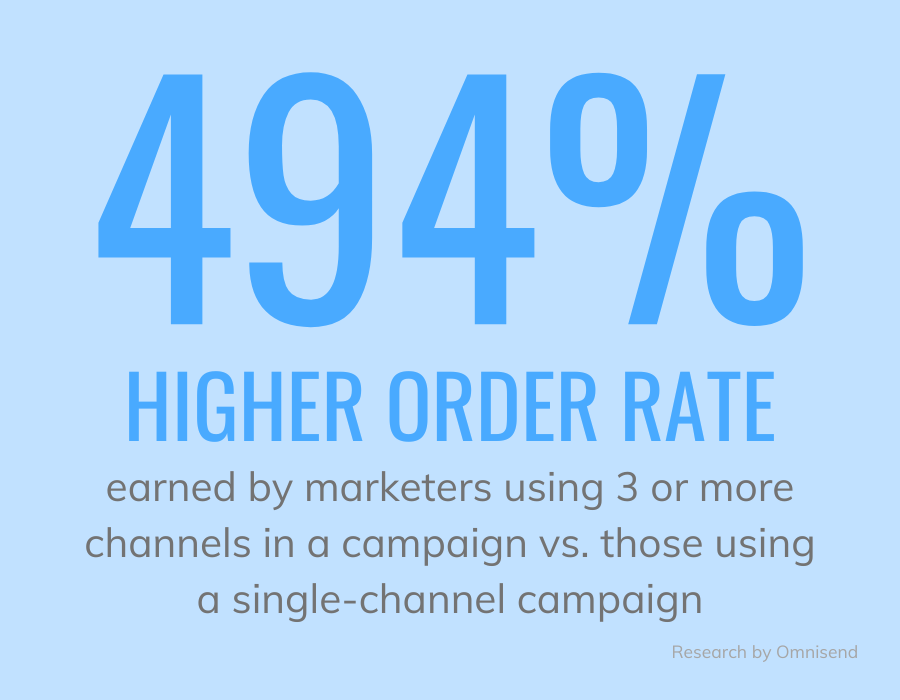
According to research by Omnisend, “marketers using three or more channels in a campaign earned a 494% higher order rate than those using a single-channel campaign.” Let that sink in, only brands that deliver integrated omnichannel experiences can cut through the content clutter.
As you evaluate marketing planning software, look for a solution that both informs and guides the integrated planning process. It should help you work more efficiently, make more informed strategic decisions. AND it should guide you in creating cohesive and compelling omnichannel experiences that drive more revenue.
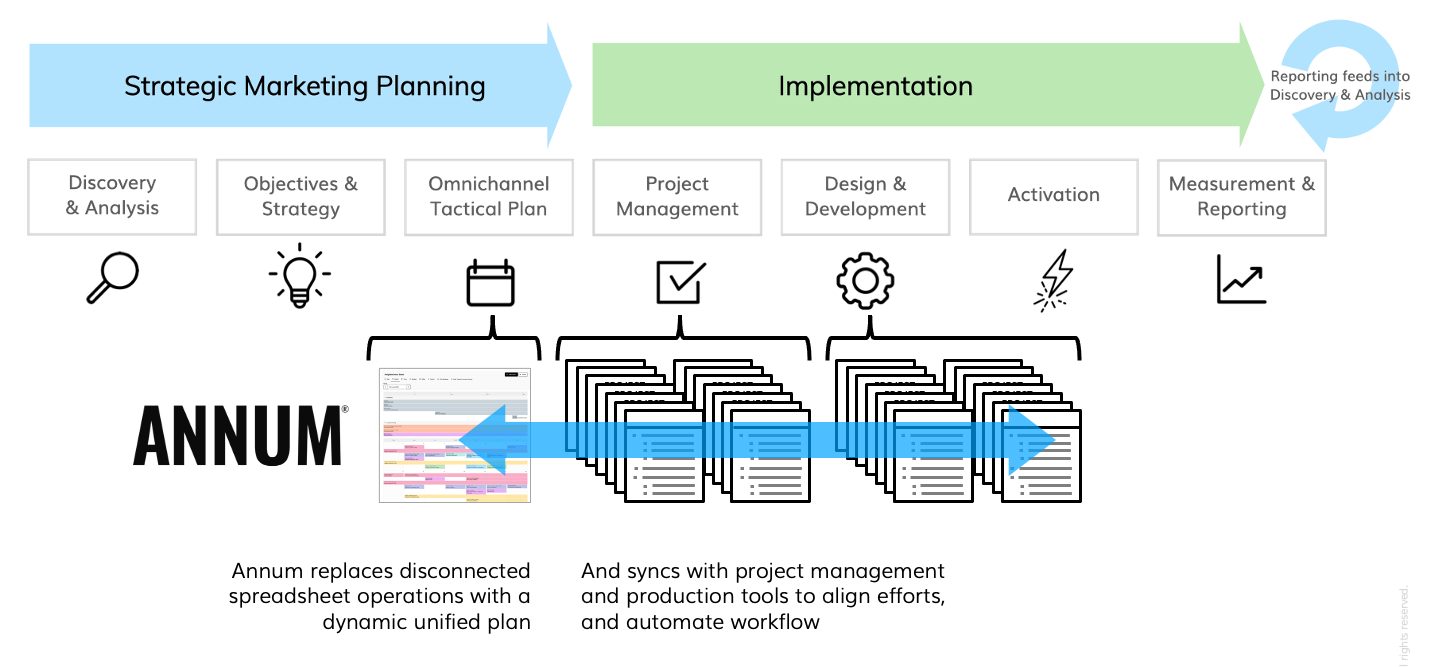
The marketing calendar is the backbone of all marketing plans. Read on for a comparison of G2’s best marketing calendars.
G2’s Best Marketing Calendar Tools Support Three Different Roles
At a high level the marketing calendar tools reviewed on G2 serve three different roles within the marketing function: marketing planning, project management, and content production. We have categorized them by role in order to help you hone in on the ones that best support your needs.
NOTE: G2 is the world’s largest and most trusted tech marketplace. More than 60 million people each year visit g2.com to to read and write authentic reviews about more than 100,000 software products and professional services.
Based on publicly available data.
Contact us if an update is needed to the information above.
Marketing Planning Tools
These tools support strategic marketing planning, in other words, determining what needs to happen when in order to meet the marketing and business objectives. They show the duration of campaigns along with the in-market timing of tactics. (Find a side-by-side comparison in our white paper below.)
Project Management Tools
Project management tools facilitate the execution of the marketing plan. They are designed for entering tasks, subtasks, assignees, and due dates. They show what needs to be done in order to bring the plan to life.
Content Planning and Production Tools
Content planning and production tools help teams create and publish content. They are designed for storing images, entering copy, and creating graphics. They facilitate asset creation, approvals, and content publishing.
If you are searching for a solution specifically for project management or content planning and production, beyond what is listed in our table, there are a wealth of options on G2 which you can explore here > calendars for project management and content planning and production.
Most solutions listed in G2’s best marketing calendar category focus on project management and content development, and only a few cater specifically to marketing planning, the area that most significantly influences sales and profitability.
To help you identify the right planning tool for your needs, our white paper provides a side-by-side comparison of G2’s best marketing calendars supporting marketing planning.
Download our Comparison of G2’s Best Marketing Calendars for Marketing Planning
Each of the planning tools listed in G2’s “best marketing calendars” category has a different set of features and benefits and provides value in a different way. In order to help you evaluate your options, we have created a comparison white paper which includes:
- Our overview of common marketing planning tools (as seen above)
- All G2 marketing calendar applications categorized by role: marketing planning, project management, content planning and production (also above)
- A feature comparison of those tools which support marketing planning (including Annum)
In the PDF you’ll also get a link to a Google Sheet version of both of these tables so you can customize them for your needs.
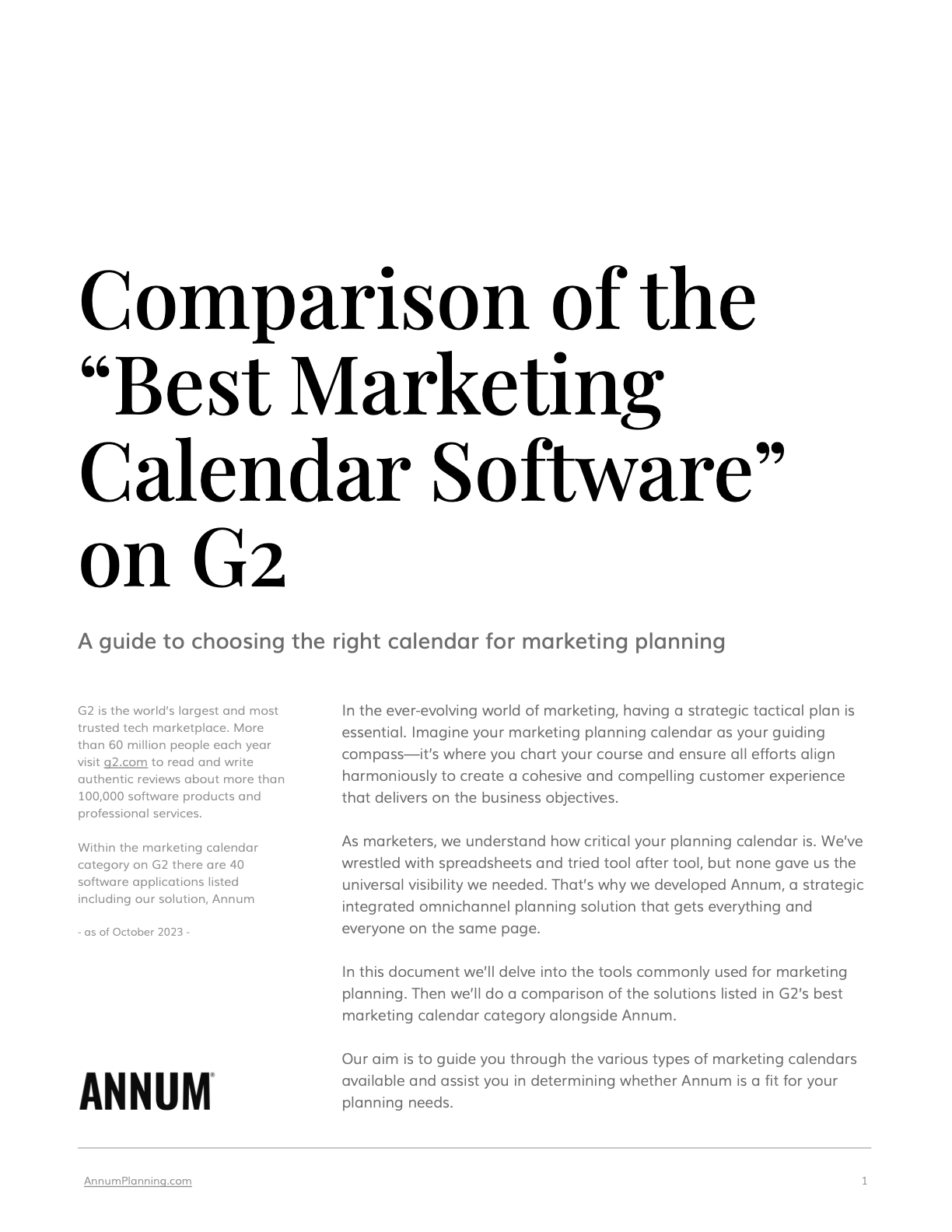
PDF is available for download and sharing with additional stakeholders and decision makers.
Smash your silos and drive more revenue.

